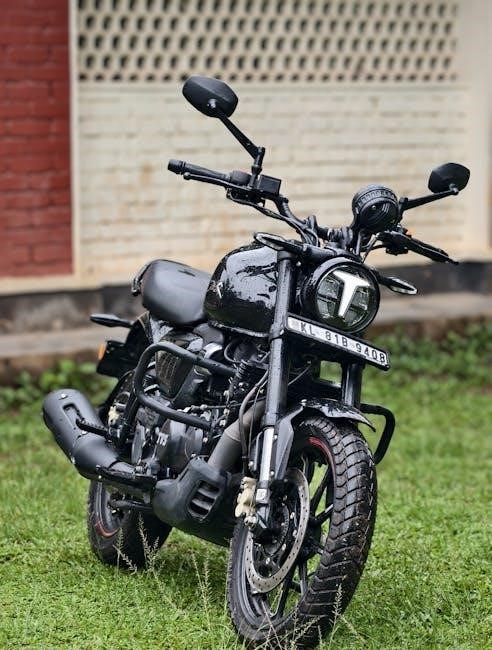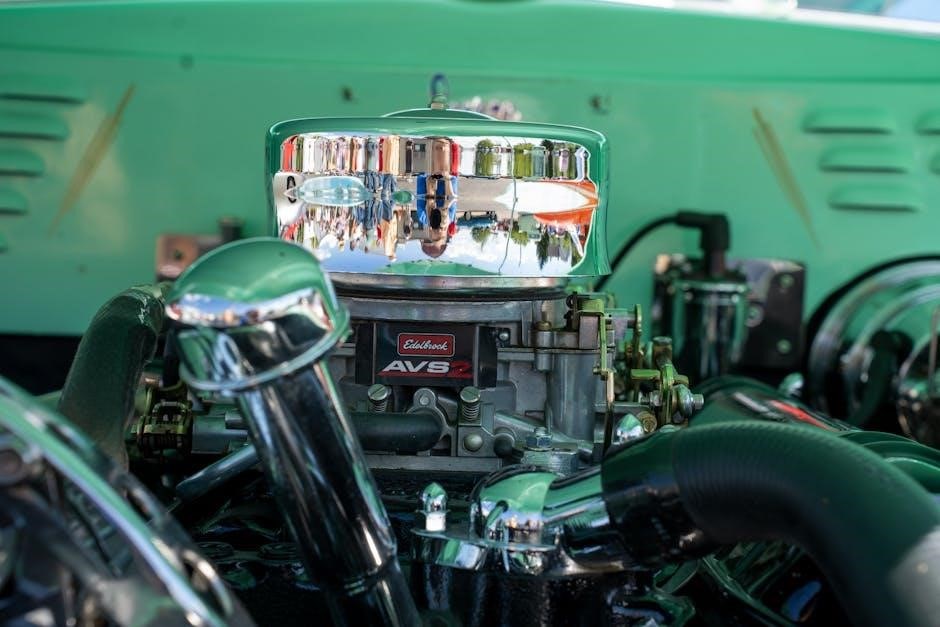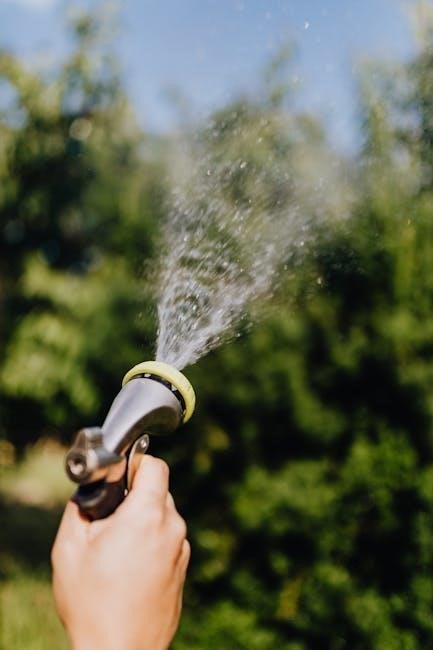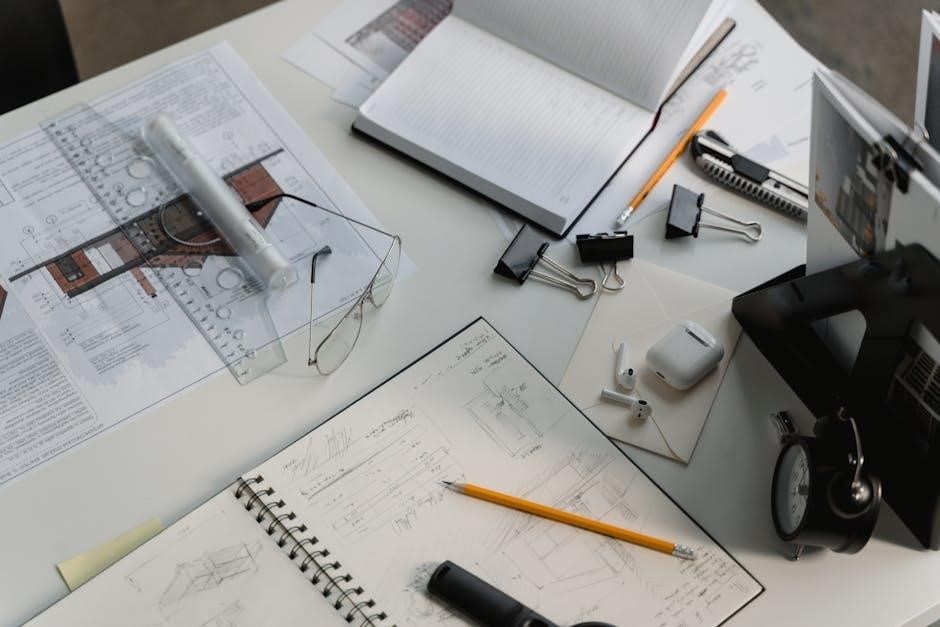Building regulations establish electrical installation standards‚ primarily for dwellings‚ while commercial/industrial sites fall under Electricity at Work Regulations 1989․ Competent persons are crucial‚ and approval is necessary before any work begins․
The Scope of Regulations: Dwellings vs․ Commercial/Industrial
Building Regulations specifically set standards for electrical installation work undertaken within dwellings – encompassing houses‚ flats‚ and similar residential properties․ This focused approach ensures a baseline level of safety for homeowners and occupants․ However‚ it’s crucial to understand that these regulations do not directly govern electrical installations in industrial or commercial buildings․
Instead‚ these latter environments are subject to the broader requirements of the Electricity at Work Regulations 1989․ This legislation places a general duty on employers‚ employees‚ and self-employed persons to ensure the safety of all electrical systems and equipment used in the workplace․ The distinction highlights the differing risk profiles and operational complexities inherent in residential versus non-residential settings‚ necessitating tailored regulatory frameworks․
The Importance of Competent Persons
Aiming to reduce death from poorly executed electrical installations‚ the regulations unequivocally emphasize the necessity of employing a competent person for all electrical work․ This isn’t merely a recommendation; it’s a fundamental safety requirement․ A competent person possesses the necessary training‚ knowledge‚ and practical experience to undertake electrical work safely and in compliance with BS 7671 and other relevant standards․
This competency extends beyond simply possessing qualifications․ It includes understanding the latest regulations‚ being able to accurately assess risks‚ and implementing appropriate safety measures․ Either an electrician or a competent person should perform the work․ Attempting electrical work without the requisite expertise poses significant dangers – both to the individual undertaking the work and to the occupants of the building․
Building Regulations Approval: A Necessity
Before carrying out any electrical work‚ securing Building Regulations approval is not optional – it’s a legal requirement‚ particularly for installations within dwellings (houses and flats)․ This process ensures that the work meets the required safety standards and minimizes the risk of electrical hazards․ Approval can be obtained through several routes‚ including self-certification schemes operated by registered competent persons․
Failing to obtain approval when required can lead to serious consequences‚ including fines and legal repercussions․ The approval process typically involves notification to the local Building Control body‚ followed by inspection and testing to verify compliance․ It’s a crucial step in safeguarding lives and property‚ demonstrating a commitment to safety and adherence to legal obligations․

Part P of the Building Regulations: Specifics
Part P covers electrical safety in dwellings‚ defining notifiable and non-notifiable work․ Compliance ensures installations are safe‚ and often requires a competent person’s certification․
What is Part P?
Part P of the Building Regulations specifically addresses electrical safety within domestic properties – houses‚ flats‚ and other dwellings․ Introduced in 2005‚ its primary aim is to reduce the risk of injury or death caused by faulty electrical installations․ It achieves this by mandating that certain electrical work must be carried out by registered‚ competent persons‚ or be subject to Building Control notification and inspection․
Essentially‚ Part P doesn’t dictate how electrical work should be done – that’s covered by BS 7671 (the IET Wiring Regulations) – but rather who can do it and ensuring the work is verified․ This verification process confirms the installation meets the required safety standards․ It’s a crucial element in protecting homeowners and ensuring electrical installations are safe and compliant․
Notifiable Electrical Work
Notifiable electrical work‚ as defined by Part P‚ encompasses installations that could significantly impact electrical safety․ This includes the creation of new circuits‚ alterations to existing circuits (like adding sockets or lights)‚ and the installation of new electrical equipment in special locations – bathrooms‚ kitchens‚ outdoors‚ or within a building’s structure․
Replacing a complete consumer unit (fuse box) is always notifiable․ Any work in a garden‚ or where a special location is involved‚ requires notification to Building Control unless the electrician is registered with a competent person scheme․ Failing to notify can result in penalties․ Registered electricians self-certify their work‚ streamlining the process and ensuring compliance with Part P regulations․
Non-Notifiable Electrical Work
Non-notifiable electrical work generally involves minor repairs or replacements that pose a low risk to electrical safety․ Examples include replacing a single socket like-for-like (same position‚ same type)‚ swapping a light fitting for an identical one‚ or replacing a fuse․ However‚ even seemingly simple tasks can become notifiable if they involve alterations to the existing circuit configuration․
Crucially‚ “like-for-like” replacements must be truly identical․ Adding a new light where none existed before‚ or changing to a different type of fitting‚ will likely require notification․ While not subject to formal Building Control approval‚ all electrical work must still be carried out safely and competently‚ adhering to BS 7671 standards․

Electrical Safety Regulations & Standards
BS 7671‚ the IET Wiring Regulations‚ and the Electricity at Work Regulations 1989 are foundational for electrical safety‚ ensuring installations are compliant and safe․
BS 7671: The IET Wiring Regulations
BS 7671‚ commonly known as the IET Wiring Regulations‚ is the national standard for the safe design‚ installation‚ and verification of electrical installations in the UK․ It’s a living document‚ regularly updated to reflect advancements in technology and safety practices․ Electricians must adhere to these regulations to ensure installations are safe and compliant with legal requirements․
The regulations cover a vast range of topics‚ from cable selection and sizing to earthing arrangements and protective device coordination․ Understanding BS 7671 is paramount for any electrician working within the UK‚ as it forms the basis for all electrical inspection and testing procedures․ Compliance isn’t merely about avoiding penalties; it’s about protecting lives and property․
Regular updates and amendments are crucial to stay current with the latest requirements‚ ensuring installations meet the highest safety standards․
Electricity at Work Regulations 1989
The Electricity at Work Regulations 1989 place a legal duty on employers‚ self-employed persons‚ and those in control of electrical systems to ensure safety․ Unlike building regulations which focus on dwellings‚ these regulations cover all electrical work‚ particularly in commercial and industrial settings․ They mandate that all electrical systems are safe to use and maintained in a safe condition․
Key requirements include preventing danger‚ ensuring systems are constructed and maintained to prevent risk‚ and providing information‚ instruction‚ and training to those working with electricity․ Regular inspections and testing are vital to demonstrate compliance․ These regulations complement BS 7671‚ providing a broader legal framework for electrical safety․
Failure to comply can result in significant penalties․

Key Areas Covered by Electrical Regulations
Electrical regulations encompass distribution within buildings‚ fire safety including cabling‚ and crucial emergency lighting and exit signage for safe evacuation routes․
Electrical Distribution within Buildings
Electrical distribution within a building is heavily regulated to ensure safety and efficiency․ Regulations cover everything from the main intake point to the final circuit supplying power to outlets and appliances․ Part B of the building regulations often dictates the need for fire-resistant cabling to prevent fire spread through wiring systems‚ a critical safety measure․
Proper zoning of circuits is essential‚ separating lighting‚ power‚ and specialized equipment onto dedicated circuits․ Regulations also address cable sizing‚ ensuring adequate capacity to handle anticipated loads without overheating․ The layout must consider accessibility for future maintenance and modifications․ Furthermore‚ electrical installations must adhere to specific requirements regarding earthing and bonding to minimize the risk of electric shock․ Compliance with these standards is paramount for a safe and reliable electrical system․
Fire Safety & Electrical Installations
Fire safety is a core concern within building regulations concerning electrical installations․ Regulations aim to minimize fire ignition risks and prevent fire spread․ A key requirement is often the use of fire-resistant cabling‚ designed to maintain circuit integrity during a fire‚ allowing vital systems like emergency lighting to function․
Electrical installations must not compromise fire compartmentation‚ meaning wiring must be installed to maintain the fire resistance of walls and floors․ Regulations dictate appropriate cable containment systems‚ such as conduit or trunking‚ to protect wiring from physical damage and limit fire propagation․ Furthermore‚ consideration must be given to potential ignition sources‚ such as overloaded circuits or faulty equipment‚ and appropriate protective measures implemented․ Compliance ensures a safer building environment during fire emergencies․
Emergency Lighting & Exit Signage
Emergency lighting and exit signage are critical components of building safety‚ directly linked to electrical installations and building regulations․ These systems must reliably guide occupants to safety during power outages or emergencies․ Regulations specify requirements for the provision‚ placement‚ and performance of both systems․
Electrical installations supporting emergency systems require dedicated circuits‚ often supplied by a backup power source like a generator or battery system․ Part B of the regulations often mandates fire-resistant cabling for these circuits․ Exit signs must be clearly visible‚ illuminated‚ and strategically positioned along escape routes․ Regular testing and maintenance of emergency lighting and signage are legally required to ensure continued functionality and compliance with safety standards․

Specific Installation Requirements
Earthing and bonding‚ RCDs‚ and appropriate circuit protection are vital for safety․ These installations must adhere to BS 7671 standards for reliable operation․
Earthing and Bonding
Earthing and bonding are fundamental to electrical safety‚ creating a low-resistance path for fault currents to flow back to the source‚ tripping protective devices․ BS 7671 details requirements for effective earthing arrangements‚ including main earthing terminals (METs) and supplementary bonding․
Bonding connects extraneous conductive parts – like metal pipes and structural steel – to the earthing system‚ equalizing potential and reducing touch voltages․ Proper bonding minimizes the risk of electric shock․ Different earthing systems (TN-S‚ TN-C-S‚ TT) dictate specific bonding requirements․ Careful consideration must be given to equipotential zones within a building․ Incorrect earthing or bonding can compromise the entire electrical installation’s safety‚ leading to dangerous situations and potential regulatory breaches․
Residual Current Devices (RCDs)
Residual Current Devices (RCDs) are vital safety components‚ rapidly disconnecting circuits in the event of a fault current to earth․ BS 7671 mandates RCD protection for specific circuits‚ including those supplying socket-outlets‚ bathrooms‚ and outdoor areas․ RCDs detect imbalances between live and neutral conductors‚ indicating current leakage․
Regulations specify appropriate RCD tripping currents (typically 30mA for personal protection) and types (Type A‚ Type AC‚ Type B) based on the potential for harmonic distortion․ Correct RCD selection and installation are crucial; improper installation can lead to nuisance tripping or‚ worse‚ failure to operate during a genuine fault․ Regular testing of RCDs is essential to verify their functionality and ensure continued protection․
Circuit Protection
Circuit protection‚ governed by BS 7671‚ is paramount for safety and preventing damage․ Overcurrent Protective Devices (OCPDs)‚ like Miniature Circuit Breakers (MCBs) and fuses‚ safeguard against excessive current flow due to overloads or short circuits․ Regulations dictate appropriate cable sizing and OCPD ratings to match circuit loads․
Each circuit must have its own dedicated OCPD‚ positioned at the circuit’s origin․ BS 7671 details specific requirements for different circuit types‚ considering factors like cable characteristics and intended use․ Proper selection and installation are vital; undersized cables or incorrectly rated OCPDs pose fire risks․ Supplementary Protective Devices (SPDs) offer surge protection‚ mitigating damage from transient overvoltages․

Inspection and Testing
Initial verification confirms a new installation’s safety‚ while periodic inspection and testing assesses existing installations․ Electrical Installation Certificates document compliance and safety․
Initial Verification
Initial verification is a comprehensive assessment performed on a newly installed or completely rewired electrical installation․ It’s a crucial step to ensure the installation meets BS 7671 standards and is safe for immediate use․ This process goes beyond simply checking connections; it involves a series of detailed tests‚ including insulation resistance tests‚ continuity tests of protective conductors‚ polarity checks‚ and earth fault loop impedance tests․
The electrician meticulously documents all findings‚ rectifying any deviations from the regulations before issuing an Electrical Installation Certificate․ This certificate confirms the installation’s safety and compliance‚ providing legal documentation for the homeowner or building owner․ Proper initial verification is paramount for preventing electrical hazards and ensuring long-term reliability․
Periodic Inspection and Testing
Periodic Inspection and Testing (PIT) is a routine check of an existing electrical installation‚ conducted at regular intervals – typically every 5 or 10 years‚ or upon a change of tenancy․ Unlike initial verification‚ PIT assesses the condition of an installation that’s already in use‚ identifying any deterioration or faults that may have developed over time․
The inspection involves a visual examination of the installation‚ followed by a series of tests similar to those performed during initial verification․ Any identified defects are reported‚ and remedial work is recommended․ A Electrical Installation Condition Report (EICR) is then issued‚ detailing the installation’s condition and safety․ PIT is vital for maintaining electrical safety and preventing fires or shocks․
Electrical Installation Certificates
Upon completion of new installations‚ or significant alterations‚ an Electrical Installation Certificate (EIC) is legally required․ This document confirms that the work has been carried out in accordance with BS 7671 (the IET Wiring Regulations) and is safe for use․ The EIC details the scope of the work‚ the test results‚ and the electrician’s qualifications․
For minor works‚ an Electrical Installation Minor Works Certificate may be issued․ Crucially‚ the EIC or Minor Works Certificate must be provided to the homeowner or building owner‚ and a copy submitted to Building Control if the work was notifiable under Part P․ Accurate and complete certification is essential for legal compliance and demonstrating electrical safety․

Amendments and Updates to Regulations
Recent changes to the EIR and ECSR have been implemented after public consultation․ Electricians must stay up-to-date with these evolving regulations for compliance․
Recent Changes to EIR and ECSR
Recent amendments to the Electrical Installations Regulations (EIR) and the Electricity Supply Connection and Provision Regulations (ECSR) represent significant updates for electricians․ These changes followed extensive public consultation‚ demonstrating a commitment to incorporating industry feedback and enhancing safety standards․
While specific details vary‚ updates often focus on clarifying existing requirements‚ introducing new technologies‚ and addressing emerging risks within electrical installations․ Staying informed about these revisions is paramount for ensuring compliance and delivering safe‚ reliable electrical work․ Electricians should actively seek information regarding these changes through industry publications‚ training courses‚ and official regulatory bodies․
Furthermore‚ understanding the rationale behind these amendments allows for a more comprehensive approach to electrical installations‚ promoting best practices and minimizing potential hazards․ VirtualDJ’s support for numerous controllers exemplifies the constant evolution within related technological fields․
Staying Up-to-Date with Regulations
Continuous professional development is vital for electricians navigating evolving building and electrical regulations․ The landscape is dynamic‚ with frequent amendments to BS 7671 and related legislation․ Relying solely on initial training is insufficient; proactive learning is essential․
Key resources include the IET (Institution of Engineering and Technology) website‚ offering updates‚ guidance‚ and training courses․ Regularly checking official Building Regulations websites for revisions is also crucial․ Subscribing to industry newsletters and participating in relevant webinars provides timely information․
Furthermore‚ engaging with professional bodies and networking with peers fosters knowledge sharing․ Remember‚ software like VirtualDJ‚ constantly updated for hardware compatibility‚ mirrors the need for electricians to adapt to regulatory changes․

Working with Building Control
Notifications must be submitted for Part P notifiable work‚ triggering Building Control inspections to ensure compliance with safety standards and regulations․
Submitting Notifications
Electricians undertaking Part P notifiable work must notify the Building Control body before commencing the installation․ This can be done directly to the local authority’s building control department‚ or through a Competent Person Scheme operator․
Using a scheme operator simplifies the process; they handle notification and often arrange inspection․ Notifications typically require detailed electrical installation plans‚ circuit diagrams‚ and confirmation of compliance with BS 7671․
Accurate documentation is vital․ Building Control may request additional information‚ so prompt responses are essential․ Failure to notify can result in penalties‚ including fines and required remedial work․ Keep records of all notifications and associated documentation for future reference․
Building Control Inspections
Building Control inspections are a crucial part of ensuring Part P compliance․ Following notification‚ a building control officer may visit the site to inspect the electrical work during and after installation․
Inspections focus on verifying adherence to BS 7671‚ safe installation practices‚ and correct earthing and bonding․ The officer will likely request sight of the Electrical Installation Certificate and test results․
Be prepared to demonstrate understanding of the installation and answer questions․ Any identified deficiencies must be rectified promptly․ A satisfactory inspection results in a completion certificate‚ confirming compliance with building regulations․ Cooperation and clear communication are key to a smooth inspection process․

Penalties for Non-Compliance
Non-compliance with building regulations can result in fines and legal repercussions․ Unsafe installations pose significant risks‚ leading to prosecution and potential imprisonment․
Fines and Legal Repercussions
Electrical safety breaches carry substantial penalties․ Fines can range significantly‚ depending on the severity of the non-compliance and potential risk posed․ For minor infractions‚ fines might begin in the hundreds of pounds‚ but serious violations – particularly those leading to injury or death – can result in tens of thousands of pounds in penalties․
Beyond financial repercussions‚ legal action can be taken․ This may involve prosecution under the Electricity at Work Regulations 1989 or related legislation․ Individuals responsible‚ including electricians and building owners‚ could face imprisonment in severe cases․ Furthermore‚ non-compliant installations can invalidate insurance policies‚ leaving parties financially vulnerable․ Maintaining compliance isn’t merely about avoiding penalties; it’s about safeguarding lives and property․

Resources for Electricians
Electricians can find vital information at the IET Website for wiring regulations and the official Building Regulations Website for compliance guidance and updates․
IET Website
The IET (Institution of Engineering and Technology) Website is an invaluable resource for electricians navigating building regulations and electrical safety standards․ It provides access to the latest editions of BS 7671‚ the IET Wiring Regulations‚ which are fundamental to safe and compliant electrical installations․
Beyond the core regulations‚ the IET offers a wealth of guidance notes‚ technical articles‚ and best practice documents covering various aspects of electrical work․ Members benefit from exclusive content‚ including webinars‚ training courses‚ and technical helplines․ The website also features tools for staying updated on amendments and changes to regulations‚ ensuring electricians remain compliant with the latest standards․ It’s a central hub for professional development and maintaining competence in the electrical industry․
Building Regulations Website
The official Building Regulations Website serves as the primary source for understanding the legal requirements governing electrical installations in buildings‚ particularly concerning Part P․ It details the scope of regulations‚ differentiating between work in dwellings and commercial/industrial properties․
Electricians can access approved documents outlining the standards for safety‚ performance‚ and energy efficiency․ The website provides information on notifiable electrical work requiring Building Control approval and clarifies what constitutes non-notifiable work․ Crucially‚ it details the process for submitting notifications and understanding inspection procedures․ Staying informed through this resource is vital for ensuring all electrical work adheres to legal standards and avoids potential penalties․
















































































